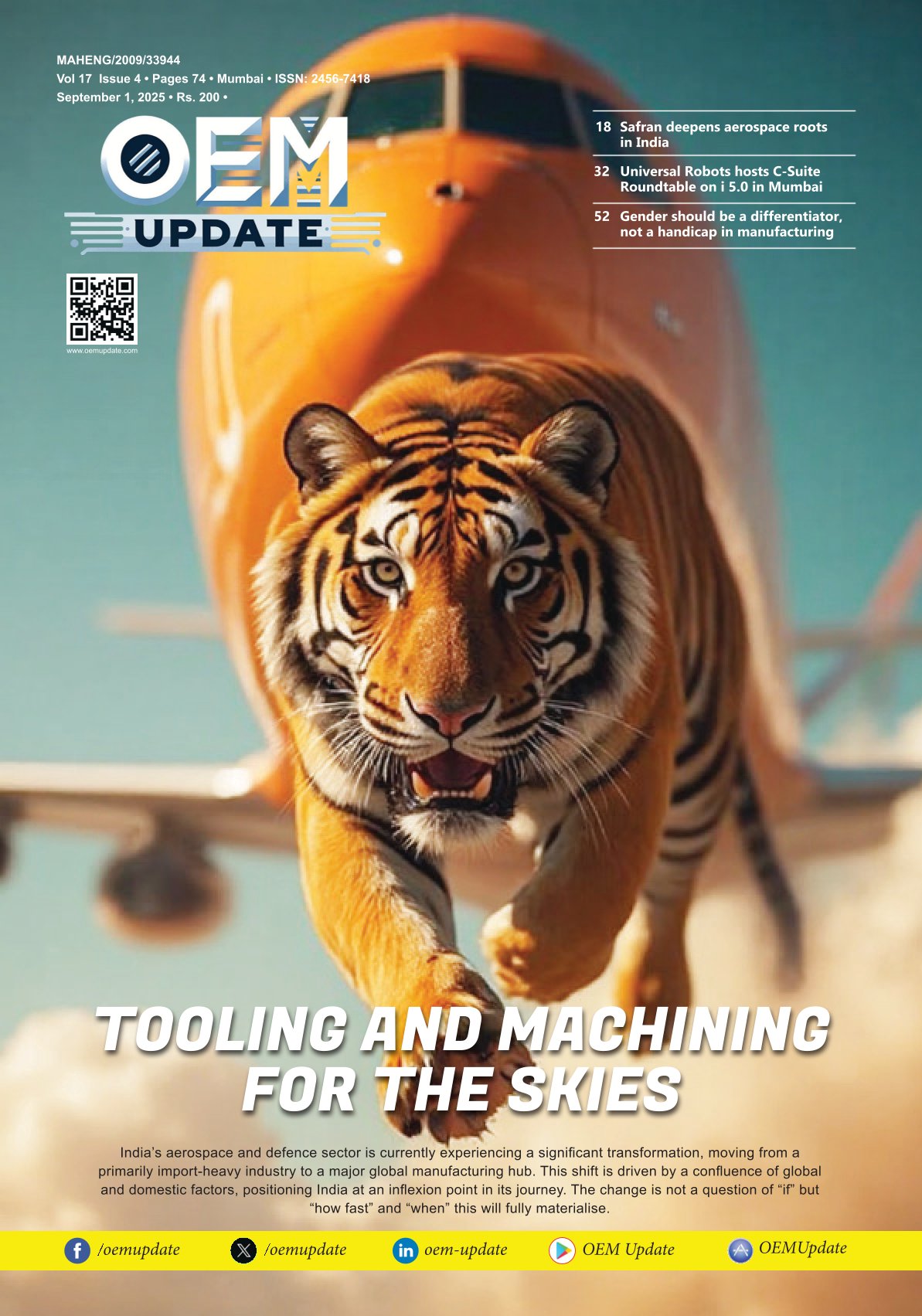Forklift Safely, an indispensible part of heavy material transportation
By OEM Update Editorial November 14, 2019 12:31 pm IST
Forklifts are indispensable in the transport of heavy material over short distances such as from one site to another within a factory or warehouse. The hydraulic valves can be controlled either electrically or manually through a set of levers.
A forklift must be controlled and operated by a skilled forklift operator. Due to its rear-wheel steering, operation of a forklift is different from driving a regular vehicle. Forklifts are potentially dangerous vehicles to operate and can even be involved in fatal accidents. Occupational safety regulations need to be followed when operating a forklift. It is recommended that operators go through a certified training course in order to be deemed fit to operate a forklift vehicle. Nevertheless, there are certain common-sense precautions that must be followed, and these should be taken seriously not only by the operators but even by their supervisors.
Demarcation of zones
The zones where a forklift operates should be clearly demarcated so that people do not stray into its path. The vehicle itself should have anti-slip surfaces especially on footholds where the operator has to transfer weight from one foot to the other. Grab handles must be designed so that the operator gets a firm grip on them while mounting and dismounting the vehicle.
Alertness of operators
A forklift operator must be extremely alert and focussed. He should be well composed and drive the vehicle slowly, always looking out for potential hazards. He should be thoroughly familiar with the vehicle and its salient features. It goes without saying that forklift operators should avoid consuming alcohol or any substance that is likely to interfere with their alertness before operating a forklift.
Blades position
The angle of the blades should be adjusted so that if the load slides, it slides backwards towards the forklift and not onto the road ahead. Yet, care has to be taken that the load merely slides backwards and does not bang into the vehicle. The height of the load should be adjusted so that the operator can see where he is driving. A low load also brings stability to the vehicle.
Proper exits
Before moving the forklift, the operator should ensure that there are no obstructions in his path. Exits should be wide enough to allow for passage of the vehicle and the protruding load. The height and width of the load should be well below any overhead obstacles such as the beam of the gate or bulky storage items.
Loads should not be stacked loosely on the blades. They should be tightly strapped to avoid tumbling off the vehicle when it is in motion. It is important to set the emergency brakes when stopping. All personnel should be away from the vehicle when the load is being lowered. But even when companies comply with all aspects of safety and risk assessment, forklift accidents take place.
Regular audits
Internal communication within the organisation is very important. All employees should be familiar with the organisation’s occupational health and safety policy. Periodic safety audits should be undertaken and corrective action are to be taken to address any anomalies.
Safety training
Safety training should not be a requirement for the operators alone. Line managers may not drive the trucks, but they are key enablers, and have bearing on the behaviour of the workforce. They should be trained to identify potential dangers and impose corrective action. Regular monitoring of safety compliance should be part of a line manager’s job description.
Companies should be proactive in investing time and resources in staff training. It may not always be possible to recruit staff with the right skills; but existing staff can be equipped with these skills so that they are well prepared to meet the challenges head on. Moreover, skilling of staff can be a great motivator for employees and can help retain talent within the company.
Clear standard operating practices
The company should have clear standard operating practices and all staff should be familiar with them. Staff should be encouraged to challenge each other and point out instances of careless behaviour. Peer pressure is a good way for employees to internalise best practices.
Often, senior management is so target-driven that deadlines become all-important and health and safety tend to get overlooked by ‘overzealous’ employees. This should be seen as a major transgression of company regulations. It is better to take action against an errant employee before any damage is done than to have to face long-standing legal issues if an accident does occur.
The Indian acceptance standard IS 10517 – 1983 for forklift trucks, that was adopted on 30 March 1983, specifies guidelines on the basis of which forklift trucks should be tested. In the preparation of this standard, assistance has been taken from BS 1727: 1971 ‘Specification for motors for battery operated vehicles’, issued by the British Standards Institution (see https://archive.org/details/gov.in.is.10517.1983/page/n5).
Authored by:
Hemant Sethi
Country Head-India
British Safety Council India
Cookie Consent
We use cookies to personalize your experience. By continuing to visit this website you agree to our Terms & Conditions, Privacy Policy and Cookie Policy.















